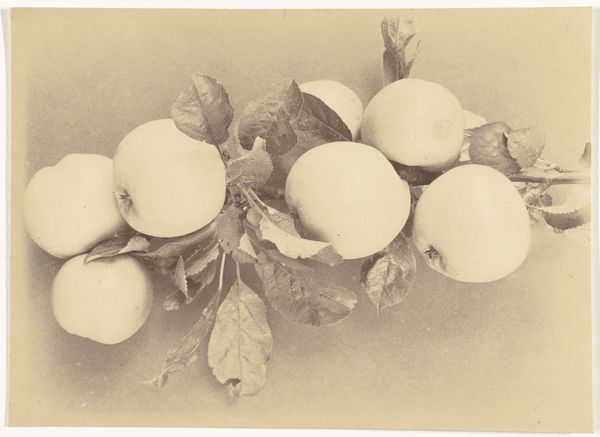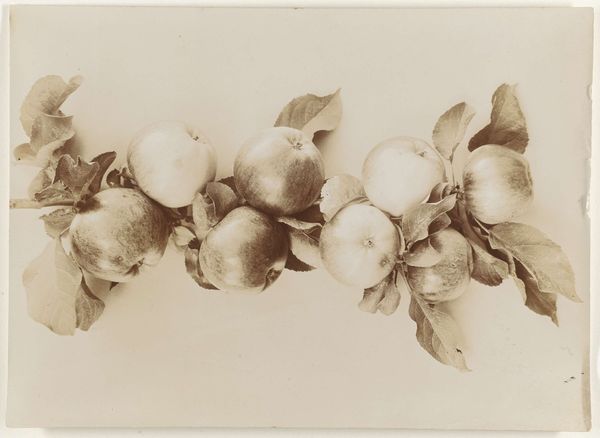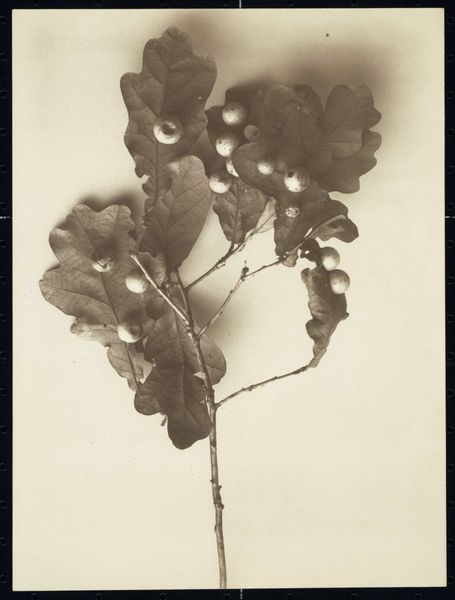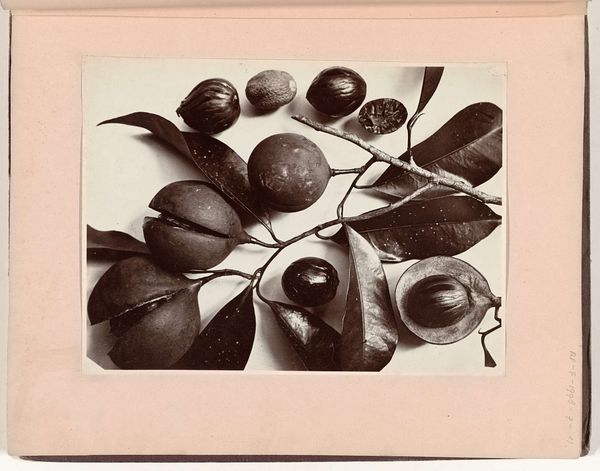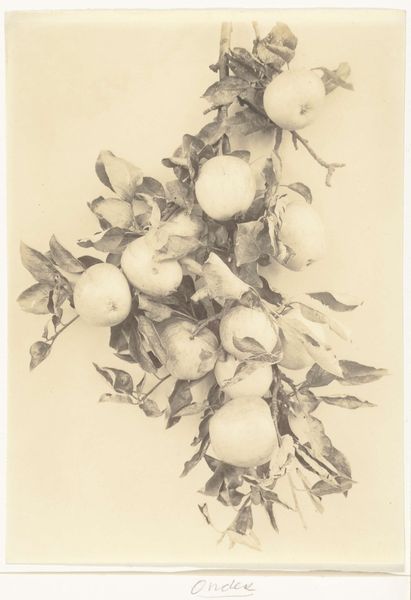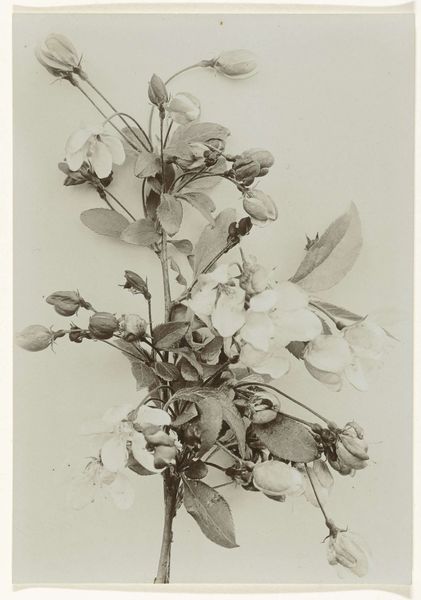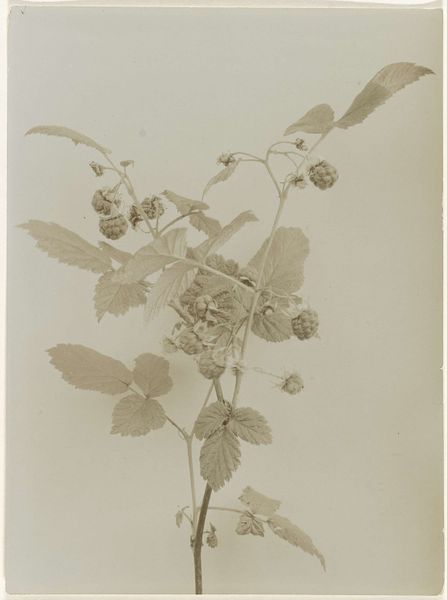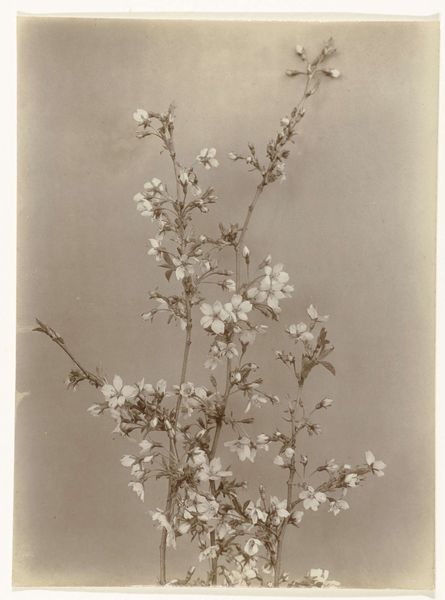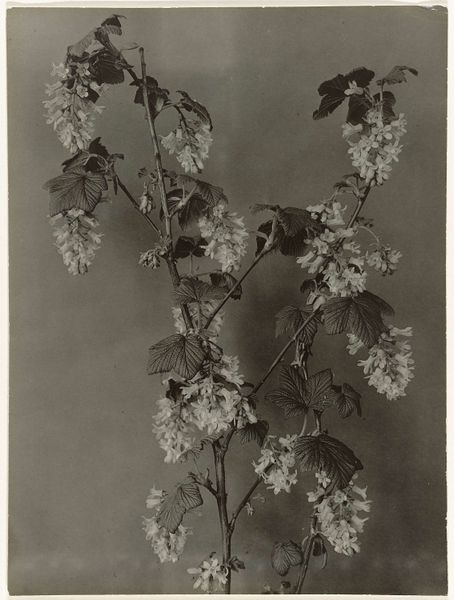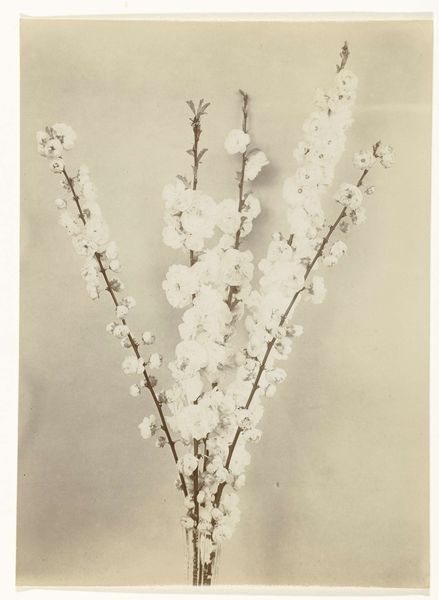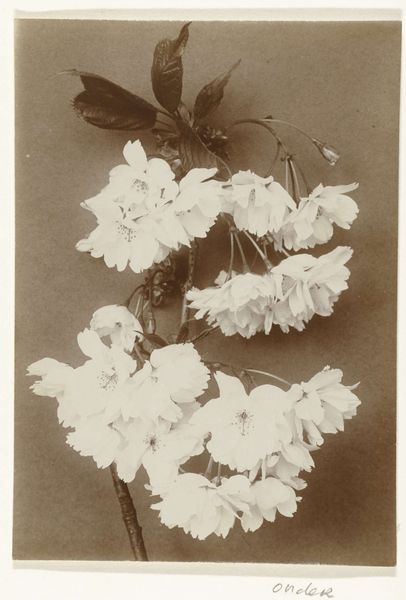
Dimensions: height 227 mm, width 164 mm
Copyright: Rijks Museum: Open Domain
Editor: This is “Tak met abrikozen,” or “Branch with Apricots,” a photograph by Richard Tepe, created sometime between 1900 and 1930. The monochrome and composition give it a feeling of stillness, almost suspended in time. What symbols or deeper meanings do you find present in it? Curator: Well, immediately, I consider the historical weight of fruit as a symbol, especially in still life. Apricots, even! Throughout art history, they’ve signified things like humility, or sometimes a hidden sensuality because of their velvety skin. Editor: Humility? How does that connect here, in this image? Curator: The simplicity, the muted tones… it's a far cry from the opulent fruit displays in, say, a Baroque painting. It presents itself with a sort of honesty. Tepe isn't interested in excess. What catches your eye in terms of its composition? Editor: I noticed how the branch is positioned almost like a cross. Is that intentional, do you think? Curator: It certainly prompts the mind to consider religious iconography, doesn't it? It also could be representative of nature itself, life branching out and flourishing, or even the human condition—growth and decay captured in one frame. Look at the varied condition of the fruit and the leaves; some are at their peak, while others are beginning to fade. Editor: So it becomes more than just a picture of apricots… it becomes a memento mori, in a way? Curator: Precisely. This photograph then acts as a visual poem, reminding us of our own transience while quietly celebrating life's simple gifts. What began as a mere display of fruit becomes a cultural repository. Editor: That gives me a lot to think about when I look at this piece! It really is about life and memory all at once, just from a branch of apricots.
Comments
No comments
Be the first to comment and join the conversation on the ultimate creative platform.
